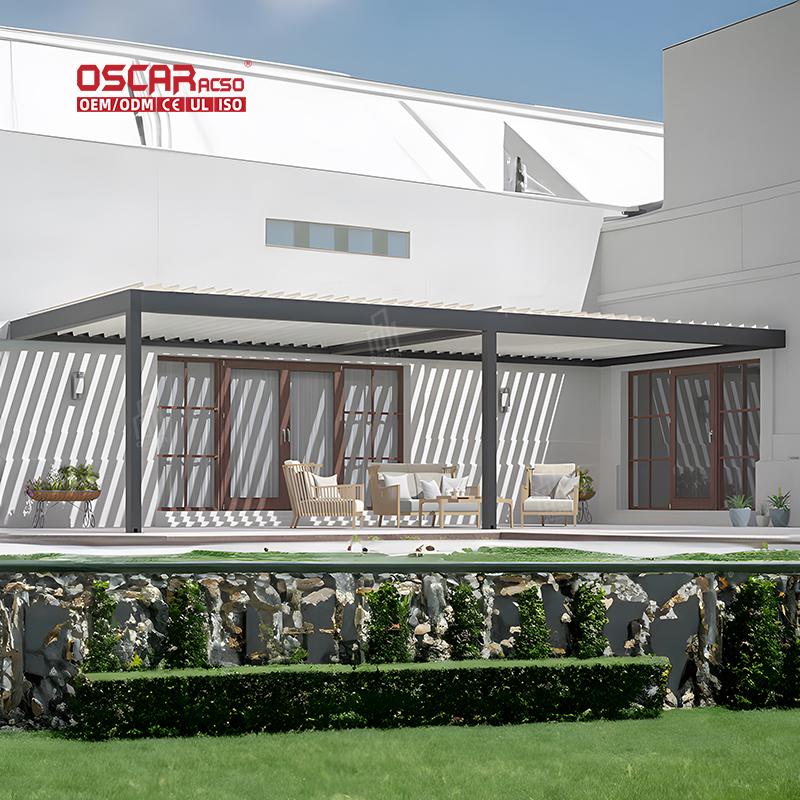Pergola Through Languages, A Global Journey of Garden Elegance
🌍 A Word That Travels the WorldHave you ever admired a garden structure draped in climbing vines and wondered what i...
🌍 A Word That Travels the World
Have you ever admired a garden structure draped in climbing vines and wondered what it’s called? That’s a pergola, a term that beautifully transcends borders and languages. More than just a word, it represents a universal desire to blend architecture with nature, creating serene outdoor retreats. But how did this Italian word become a global phenomenon? Let’s unravel its linguistic journey and cultural significance.
The Italian Roots: La Pergola 🇮🇹
The story begins in Italy. The word “pergola” is derived from the Italian “pergola,”and the Latin “pergula,”which referred to a projecting eave or a roof terrace supported by pillars. This hints at its core function: a sheltered, open-sided structure.
Its architectural essence is deeply woven into Italy’s landscape. A prime example is the magnificent La Pergola restaurant in Rome, a three-Michelin-starred dining destination situated in a roof garden atop the Rome Cavalieri hotel. It perfectly embodies the elegance and shelter the structure promises .
Linguistic Adoption: From Europe to Your Backyard 🗣️
From its Italian origin, “pergola” was effortlessly adopted into numerous European languages with minimal change, showcasing its widespread appeal.
- •
English: In English, it’s simply pergola. The definition is precise: “an arch or a structure with a roof over which climbing plants can be grown”. It’s also known by the lovely synonyms arbor or bower.
- •
French: In French, it remains pergola, meaning a green arbor, trellis, or sunshade (“tonnelle, gloriette, véranda”) .
- •
German: German speakers also use Pergola, describing it as a leafy arbor or a covered walkway with climbing plants (“Laubengang”) .
- •
Spanish & Portuguese: The word travels smoothly into Spanish and Portuguese, staying as pergola.
This lack of translation highlights how the concept and the word itself are universally recognized across many cultures, much like other architectural terms borrowed from Italian.
Beyond the Word: Cultural Meanings and Uses 🌿
While the word is similar, the cultural nuances and uses of a pergola can vary, adding local flavor to this global structure.
- •
In Western Gardens: In Europe and North America, pergolas are quintessential garden features. They are designed for shade, to support climbing plants like roses or wisteria, and to define outdoor living spaces for dining or relaxation .
- •
A Culinary Landmark: In Italy, as seen with La Pergola, the name can signify luxury and high culinary art, elevating the term beyond mere garden furniture to an experience .
- •
Global Variations: While the search results don’t detail Eastern interpretations, similar structures exist worldwide, like the Japanese “tsuridono”(fishing pavilions) or Chinese garden pavilions, though they serve philosophically distinct purposes.
The core idea remains: creating a defined, shaded space where nature and human design meet.
Why “Pergola” Stuck: A Testament to Design ✨
So why did this specific Italian word become the international standard? It’s a testament to the enduring design principle it represents.
The pergola fulfills a fundamental human need: to enjoy the outdoors in comfort. It provides dappled shade, a framework for lush greenery, and an architectural element that extends your living space into the garden. Its design is versatile—it can be a simple wooden structure in a suburban backyard or a grand, metal-framed centerpiece in a luxury hotel .
This combination of function, beauty, and versatility made the object, and thus its name, worth exporting and adopting globally.
Choosing Your Pergola: A Material World 🛠️
Understanding the word is the first step; choosing the right one for your home is next. The material you select dramatically impacts its look, durability, and maintenance, allowing you to tailor it to your local climate and personal style .
- •
Wood (Classic & Natural): Offers a traditional, warm look. Cedar and redwood are popular for their natural resistance to rot and insects. However, wood requires regular maintenance like staining or sealing .
- •
Metal (Modern & Sturdy): Aluminum is a top choice for its durability and minimal upkeep. It’s rust-resistant and can be powder-coated in various colors. Steel is strong but may require treatment to prevent rust .
- •
Vinyl (Low-Maintenance): A budget-friendly option that resists rot, insects, and fading. It’s easy to care for but may lack the natural aesthetic of wood .
- •
Composite (Best of Both Worlds): Blends wood fibers with recycled plastics, mimicking wood’s look with enhanced durability and very low maintenance .
The best choice depends on your local climate, desired aesthetic, and how much upkeep you’re willing to do .
The Final Bloom: More Than Just a Word 💡
The journey of “pergola” from an Italian term to a global garden staple is a fascinating example of how culture and design influence language. It proves that a great idea—a structure that elegantly merges the built environment with the natural world—resonates everywhere.
Whether you’re relaxing under a wooden pergola covered in vines or dining at a world-class restaurant bearing the name, you’re participating in a rich, cross-cultural tradition. It’s a reminder that our love for beautiful, functional outdoor spaces is a universal language in itself.


